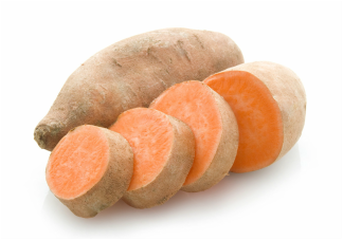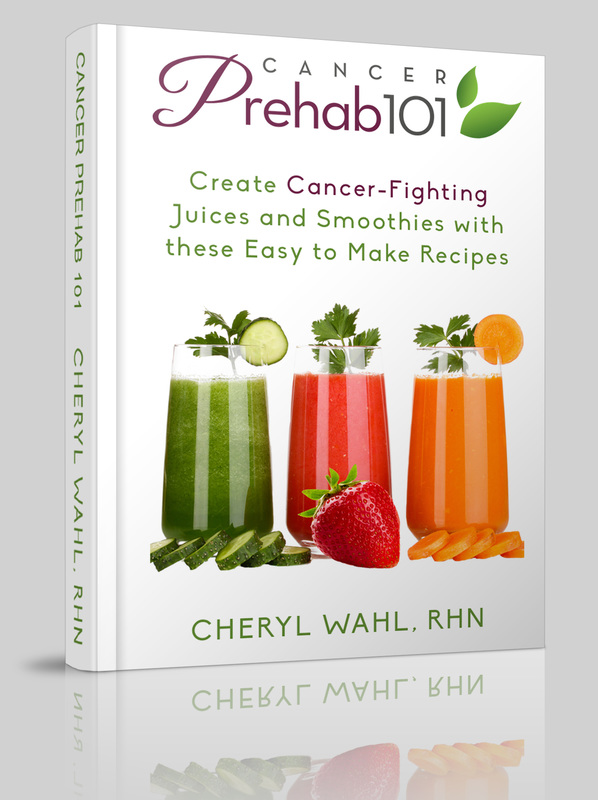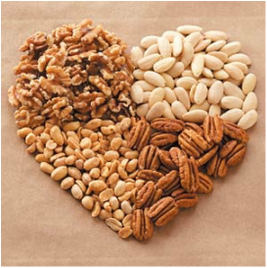 A busy schedule can also throw off the timing of your meals so keeping healthful, wholesome snacks like trail mix and all-natural granola bars in your car or purse can keep you from having a blood sugar freak out. And what happens when our blood sugars crash? We usually crave something sweet, simple carbs, like chocolate, donuts or cookies. This only creates the rollercoaster ride of blood sugar highs and lows. Here are some natural stress-busting foods: Hemp seeds. Also known as hemp hearts, hulled hemp seeds are great for sprinkling on cereal or salads and they're an excellent source of protein, omega-3 fatty acids and B vitamins that help your body make nerve-calming tryptophan. Coconut water. Available in convenient single-serve tetrapaks, this tropical drink is a natural source of electrolytes, vitamin C and medium-chain fatty acids that are used as immediate energy for your active body. Granola bars with no refined sugar. Between meals, when you're on the go, granola bars are easy to slip into your bag so you don't have to resort to vending machines or gas station fare. Choose a bar with no refined, white sugar in the ingredient list as that will only aggravate your overworked adrenal glands. A few of my favourite brands are Kashi and Kind. Or you can make your own with this recipe from 'Oh She Glows', my current go to recipe book. Trail mix. Pre-pack small handfuls of dried fruit, seeds and nuts to help keep blood sugar levels stable during a long day. Like granola bars, these little bags of raw energy will prevent resorting to non-nutritive processed food that may stress you out further. Do you have any healthy portable snacks? Share them with us in the comments below. In good health, Cheryl Wahl, RHN Certified Professional Cancer Coach
0 Comments
The Food Marketing Institute has recently reported that 71% of us are cooking at home more often these days. That means more people are sitting in rush hour traffic rummaging through their cupboards and fridge in their minds, trying to figure out what's for dinner. Naturally, home cooking has fewer calories and more nutritional value than restaurant meals but are you maximizing your savings or adding to your stress when you eat at home?
The average household wastes 14% of the food they buy due to poor planning and wastage. If you spend $250 a week on groceries (the average family of four), 14% is the equivalent of three gourmet lunches. By planning your meals you only shop for the fresh items you need for the week, thus reducing wastage and worry. Any extra portions can be labelled with the date and frozen right after you make them so they avoid becoming funky experiments in the back of the fridge. When you plan meals, make sure to include enough foods from each food group, with special attention to fresh vegetables and fruits for every meal as well as snacks. Always keep an eye out for sales on grain products like rice, pasta, couscous and oats so you can stock up and have them as staples for every meal. Frozen fish, frozen vegetables and even frozen fruit are also good to keep on hand for quick entrees, side dishes and smoothies when you haven't had a chance to buy fresh ingredients. Meat is definitely the most costly mealtime staple but re-thinking how you use it can be better for your wallet and your waistline. With books like In Defence of Food by Micheal Pollan, it's becoming increasingly popular to think of meat as a condiment for vegetables as opposed to the meal's focal point. Diversify your cooking skills and learn techniques to stretch your food dollar. For instance, braising or slow cooking cheaper cuts of meat is an easy way to save on meat. Or, better yet, swap out meat for lentils and other beans once or twice a week for even greater savings – and health benefits. Soups, casseroles and salads are all great ways to pepper in a little meat instead of serving it in one big chunk. The benefits of meal planning are numerous and getting started is surprisingly simple. All you need to do is jot down your meals before you go grocery shopping, know what you have on hand, and write out your shopping list so you buy only what you need. At the beginning of the year, when money and budgeting is on our minds, here a few tips that allow us to eat healthy while managing our food budget:
So, take a few moments at the beginning of your week and plan out your meals and snacks. You will save money by avoiding impulse buys and purchasing ready-made meals. Let me know what time and money saving tips you have. Post in the comments below. In good health, Cheryl Wahl, RHN Certified Professional Cancer Coach  Will this be you tomorrow? You wake up with a headache, upset stomach, your mouth is dry and you're feeling down… It's official...you have a “hangover". No matter what you do your body needs rehydrating, rest and sleep to recover. You need to nourish your body with vitamins and liquids. Here are some tips; 1. Sleep Your body needs to recover so sleep is your best option. Try to stay in bed if you have the luxury, if not, put off unnecessary errands and chores until the next day. 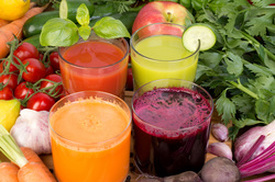 2. Hydration The symptoms you're feeling post-drinking are signs of dehydration caused by the alcohol. That's why you must rehydrate yourself by drinking a lot of water when you get up. Rehydrating your body is the key to recovering from the hangover, this cannot be stressed enough. You can even put some lemon in your water because it'll help soothe your stomach and will add vitamin C. When drinking water, avoid water that is extremely cold or hot; drink water at room temperature. If you have a juicer, or even a good blender, trying juicing some veggies and fruits the night before. A glass of easy to digest anti-oxidants is great for helping to flush out the toxins of the night before.  3. Avoid caffeine Even though you feel like coffee is your cure, caffeine is a diuretic and it will cause further dehydration of your body. Also milk and other dairy products are not a good idea for an upset stomach and nausea. Stay away from them. Try a cup of green tea instead. The polyphenols in green tea will help balance blood sugar levels and reduce cancer risk while too.  4. Carbohydrates A couple slices of plain toast or a few crackers can be a good idea. Carbs will help bring up your blood sugar levels. Even better, have a piece of fruit, which will refresh and give you the energy you need  5. Exercise Sweat it out… Endorphins released can elevate your mood, detoxify your body and make you feel better...clearer. Just be sure you drink lots of water so as not to get dehydrated. If you want to prevent a “hangover” then try to eat a meal, or at least a snack, before or while you are drinking. Water before bed will also help wash out the alcohol from your system, and drinking water between drinks is also a great way to prevent the hangover effects. Happy New Year and all the best for 2015! Cheryl  Christmas is a time for sharing, caring, and visiting family and friends, but what if you don’t feel like doing any of those things? You have cancer and just want to be alone. All you really want for Christmas is for the cancer to be gone. How do you get through the holidays when you’re not feeling cheery? How do you enjoy the Christmas festivities when you’ve been told to watch what you eat and drink? How do you prepare for Christmas so that you don’t feel stressed and overwhelmed? Here are six recommendations to successfully get through the holiday season happier and healthier. 1. Shop online – The thought of visiting a mall full of germs, with your lowered immune system, kind of freaks you out. This year, take a break from bacteria and visit the Internet instead. You can get anything you wish for online. If the gift doesn’t fit or isn’t quite right, the purchase policy probably allows you to exchange it in store. Gift cards/certificates are great too. You can enlist the help of a friend or family member to go out and buy them for you. Remember all those people that asked, “What can I do to help?” Take them up on the offer. Not only will it keep you safe from the exposure to potentially harmful germs but also your loved ones will feel good knowing they are helping you. 2. Limit sugary treats – I am the first to admit that I love my Mum’s holiday baking. It wouldn’t be Christmas without it. However, when battling cancer, eating sugar and white flour is another story. Glucose is the #1 fuel for the cells in your body and that includes cancer cells. It is imperative that you reduce your consumption, or cut it out altogether. However, if there is a traditional cookie or bread that fills you with joy during the holidays, have it. There is something to be said about feeding your soul. My recommendation, though, is to take a few moments in a comfy chair and truly savor not only the flavor but also the memories behind it. 3. Eat extra veggies and fruit – As you go through cancer treatment, whether it’s chemotherapy or radiation, your immune system takes a beating. You need to build up your immune system as best as you can. The main nutrients you need for this are Vitamins A, C and E, as well as zinc and selenium. There are many supplements on the market today that have these immune building ingredients, but I always advise my clients to eat a rainbow of real fruit and vegetables every day. And please make sure it’s organic! These foods contain beta-carotene and carotenoids that convert to vitamin A in our body: Tomatoes, carrots, squash, sweet potato, pumpkin, apricots, cantaloupe, tangerine, asparagus, broccoli, kale, collard greens, beets Vitamin C rich foods: peppers, tomatoes, strawberries, raspberries, sweet potato, peppers, oranges, papaya, cantaloupe, broccoli, kale, Brussels sprouts, kiwi fruit, blueberries Vitamin E: red peppers, carrots, pumpkin, mangoes, papaya, broccoli, mustard and turnip greens, spinach, swiss chard, nuts, sunflower seeds Zinc: Oysters, poultry, beans, nuts, whole grains Selenium: Brazil nuts, tuna, poultry, whole grains For tips and delicious recipes to bring more veggies and fruits into your diet, check out my eBook titled, “Cancer Prehab 101: Juices and Smoothies”. 4. Avoid alcohol – The holidays are often a gathering of friends and family, and it often involves a glass of wine or spirits. However, with cancer it is critical to eliminate alcohol. Your liver is already going through hell trying to metabolize the cocktail of drugs introduced to your body. It doesn’t need more trying to eliminate alcohol. Again, if a glass of wine at Christmas dinner is an important tradition to you, then have a glass, but limit it to one. Then drink sparkling water and pure cranberry juice. It is delicious and festive and you’ll be doing your body a favor. 5. Reduce animal protein consumption –The bestselling book “The China Study” by T. Colin Campbell, Ph.D., examines the relationship between the consumption of animal products (including dairy) and chronic illnesses such as coronary heart disease, diabetes and cancers of the breast, prostate and bowel. The authors conclude that people who eat a plant-based/vegan diet—avoiding all animal products, including beef, pork, poultry, fish, eggs, cheese and milk, and reducing their intake of processed foods and refined carbohydrates —will escape, reduce or reverse the development of numerous diseases. They write that "eating foods that contain any cholesterol above 0 mg is unhealthy." Campbell also goes on to say that animal protein fuels cancer that already exists. Numerous studies also show animal protein cooked at high temperatures form carcinogenic compounds, which, as the name states, contribute to cancer risk. Consume plant-based proteins as your main source. They provide the antioxidant effects of vegetables to help offset the effects of the traditional turkey you eat at the Christmas dinner table. 6. Spend time with loved ones – You may feel like crawling under a blanket and forgetting about the world. You could be experiencing feelings of anger, vulnerability, sadness, fear of recurrence or death, depression, anxiety or panic. This emotional distress can affect your ability to carry out everyday activities. First of all, know that these feelings are common, and it’s okay to feel the way you do, but keeping them to yourself is not a healthy way to deal with them. Being in the company of others and talking about what you’re feeling does wonders for the soul. Whether it’s with a support group or your doctor, with family and/or friends, talk with whom you feel most comfortable. And when someone says, “What can I do to help?” let them do something for you. Your loved ones care about you and want to offer support. Come up with a list of things that you really could use help with: a ride to the doctor, making meals or snacks (like muffins), going to the grocery store, yard work, housecleaning or just coming over for a visit to talk about anything else but your cancer. Do what you feel comfortable doing, not what others expect you to do, and don’t feel guilty about your decisions, only you know what’s really best for you. As you move through the holiday season surviving cancer, know that your focus on wellness, tradition and friends and family, will turn surviving into thriving. Making simple changes can feel overwhelming, finding a starting point is often a challenge. If you or anyone you know needs assistance making these diet and lifestyle changes, I am a Certified Professional Cancer Coach and can help. We can meet one-on-one, chat on the phone, or connect through Facetime or Skype. Call me at 778-836-3831 or send an email to [email protected]. In good health, Cheryl Wahl, RHN Certified Professional Cancer Coach The origin of the sweet potato is thought to be in either Central America or South America. In Central America, they were domesticated at least 5,000 years ago and in South America, remnants dated as far back as 8000 BC have been found.
Although the soft, orange sweet potato is often called a "yam" in parts of North America, the sweet potato is botanically very distinct from a genuine yam, which is native to Africa and Asia. Despite this confusion, the nutritional content is very similar. As a root vegetable, it is a powerhouse of nutrients for the winter season, helping to build the immune system. Nutritional Value Top Nutrients in Sweet Potato You'll get a respectable 4 grams of fibre and 3 grams of vegetable protein in one medium sweet potato. Flavorful and filling, a baked sweet potato is only 103 calories - and fat-free and low in sodium to boot! The sweet potato really shines when comes to the B vitamin niacin, vitamin B-6 and vitamin A. For about 100 calories, you’ll get 69% of the RDA for niacin, 25% of the RDA for vitamin B-6 and 122% of the RDA for vitamin A in the form of beta-carotene. Sweet potatoes also provide some calcium, iron, potassium and vitamin E. Here is the nutrition information for on medium baked sweet potato with the skin on: Nutrient name & amount Protein 2.29 g Total Fat 0.17 g Carbohydrate 23.61 g Energy 103 kcal Fibre, total dietary 3.8 g Calcium 43 mg Iron 0.79 mg Potassium 542 mg Sodium 41 mg Beta carotene 13.12 mg (Source: Canadian Nutrient File, 2007) Top Phytochemicals in Sweet Potato Sweet potatoes are an excellent source of beta-carotene, an antioxidant phytochemical that’s part of the carotenoid family. Beta-carotene, which our bodies convert to the active form of vitamin A, plays an important role in eye health as well as disease prevention and building our immune system. Although there is no official recommendation for beta-carotene, some health experts suggest daily consumption of 3 to 6 milligrams of this orange pigment to prevent chronic disease. Sweet potatoes out-rank other bright orange vegetables that contain beta-carotene: Beta carotene (milligrams) - per 1/2 cup serving Sweet potato 16.8 Carrot juice 11 Canned pumpkin 8.5 Cooked carrots 6.5 Raw carrots 4.6 Winter squash 2.9 (Source: Foods that Fight Disease, 2008) Varieties of Sweet Potatoes Not to be confused with yams which have off-white, yellow, purple or pink flesh that’s lower in vitamin C and A, sweet potatoes come in two main varieties - the moist (orange-fleshed) and dry (yellow-fleshed) sweet potato. The pale or dry sweet potato has a thin, light yellow skin and a pale yellow flesh. Its flavor is not sweet and after being cooked, it is dry and crumbly, similar to a white baking potato. The darker or moist variety has a thicker, dark orange skin and a bright orange flesh that is sweet and has a moist texture. The darker orange color also means that the moist sweet potato has more beta-carotene than the yellow dry sweet potato. Tips on Buying and Enjoying the Sweet Potato How to Choose Sweet Potato Choose sweet potatoes that are small to medium-sized with smooth skins. The potatoes should be heavy for their size. You may find canned and frozen sweet potatoes in ethnic food markets. These may be labeled yams, although incorrectly. The canned ones are usually packed in heavy syrup or "candied" although some processors do pack them in water. To get maximum nutrition buying fresh sweet potatoes is recommended. Canned or processed sweet potatoes (including sweet potato fries) are lower in beta-carotene, vitamin C and B vitamins. How to Wash Sweet Potato Eating the sweet potato with the skin on imparts the maximum nutrition. Use a vegetable scrubbing brush to remove any traces of dirt while running cool water over your sweet potatoes. Ideally, sweet potatoes should be washed immediately before eating – instead of before storage – to minimize the risk of mold growth during storage. How to Store Sweet Potato Sweet potatoes should be stored in a cool, dry place – but not the refrigerator. Doing so will produce a hard core in the center and an "off" taste. If stored somewhere that is too cool, the natural sugars turn to starch which affects their flavor. Stored at lower than room temperature, sweet potatoes will keep for a month or longer. If kept at normal room temperature they should be used within a week of purchase. Cooked sweet potatoes freeze well. Wrap unpeeled cooked sweet potatoes individually in aluminum foil or freezer wrap. Place in plastic freezer bags, label, date and freeze. How to Cook Sweet Potato To get the most nutrition out of your sweet potatoes, cook and serve them with the skins on. Many of the nutrients - like fibre - are contained in the skin. Sweet potatoes have a very thin skin and should be handled carefully to prevent bruising. When cutting them always use a stainless steel knife or vegetable peeler. As with carrots (see above chart), exposure to heat during cooking heightens the bioavailability of beta carotene in sweet potatoes. Baking: Pierce the potatoes with a fork or small knife before baking. This will let the steam escape. The potatoes tend to ooze sticky juices as they bake so you may want to put them on a foil-lined baking sheet. Cook for 30 to 60 minutes or until tender in a 400F oven. The bigger they are the longer they will take to fully cook. Grilled: Wrap medium-size potatoes individually in heavy duty foil. Place on the grill about 5 inches from the coals. Cook for about 45 minutes or until tender. To speed up the process, boil 10 minutes before wrapping in foil. Mashed: Place whole unpeeled potatoes in boiling water and cook 35-45 minutes, or until the potatoes give easily when pricked with a fork. If the potatoes have been cut into chunks, cooking time will be about 10 to 15 minutes. Drain immediately. You can leave the peel on for extra nutrients or remove them for a smoother mashed potato. Mash with a potato masher, fork or electric mixer. Microwaving: For best results, choose uniformly sized potatoes. (e.g. do not vary much in width from center to ends) Pierce, place on paper towel and cook on high, turning each potato halfway through cooking time. Remove and wrap in aluminum foil and let stand for at least five minutes. Microwave cooking times from the North Carolina Sweet Potato Commission: · 1 medium: 3-4 minutes · 2 medium: 5-6 minutes · 3 medium: 7-8 minutes · 4 medium: 8-9 minutes Keep in mind that times may vary depending on microwave size and power. Sautéed: In a large deep skillet, heat enough oil to cover the bottom of the pan. Add sweet potato strips to cover bottom of skillet. Sauté for five minutes or until brown and tender. Remove from hot oil and drain on paper towels. How to Enjoy Sweet Potato Sweet potatoes can be used in place of white potatoes or squash in most recipes. They are very versatile and can be added to soups, stews, curries, stir-fries and even baked goods. Before adding cooked sweet potato to a muffin, bread or pancake recipe, pureed the flesh in a food processor. Looking for a new way to enjoy sweet potatoes? Instead of carrots, try grating raw sweet potato into your favorite coleslaw recipe for a boost of beta-carotene. What’s a kid-friendly way to eat sweet potatoes? Make sweet potato chips by thinly slicing this nutritious tuber. Brush the slices with oil, season with salt, paprika and cumin for a savory snack or brown sugar and cinnamon for a sweet treat. Roast in a 400 F (200 C) oven until golden and crisp. Main Health Benefits of Sweet Potatoes Foods that are high in beta-carotene, like sweet potatoes, help prevent vitamin A deficiency which can cause dry eyes, dry skin, impaired bone growth and night blindness. In addition to maintain optimal health, the nutritious sweet potato may also play a role in preventing chronic diseases such as heart disease and lung cancer. Studies have shown that high intake of carotenoids – like the beta-carotene in sweet potatoes – can reduce the risk of heart disease by preventing oxidation of “bad” LDL cholesterol in the bloodstream.[1] Research has also shown that lung cancer risk in smokers and non-smokers alike can be reduced by eating foods that are high in beta-carotene. However, high intake of this carotenoid by way of supplements can raise the risk of lung cancer in smokers.[2] Fun Fact Did you know that chopping, pureeing and cooking your sweet potatoes in a little bit of fat increases the absorption of beta-carotene? Drizzling just one teaspoon (5 ml) of extra virgin olive oil on your baked sweet potato boosts its benefits to your health. Enjoy! Cheryl Wahl, RHN Certified Professional Cancer Coach [1] Am J Clin Nutr 2003, 77(6): 1390-99 [2] N J Engl Med 1994, 330(15): 1029-35 The key to successful weight control is learning to listen to your body’s cues. You want to eat when you feel hungry, but not famished. Feeling overly hungry can trigger overeating. The following tips can help you get in touch with the signs of hunger and satiety to prevent overeating:
1. Stick to a schedule - Plan to eat every three to four hours, stopping after dinner. 2. Include lean protein - Protein-rich foods such as lean meat, fish, poultry, egg whites, tofu and legumes help you feel full longer because they require more time to digest and absorb than other nutrients. Divide your protein intake among three meals and two snacks. Protein-rich snack choices include nuts, soy nuts, edamame, hard-boiled eggs, part-skim cheese, yogurt and/or a protein bar. 3. Don’t skip protein at breakfast - Research suggests that eating lean protein in the morning keeps you satisfied longer than if eaten at other times of the day. 4. Choose low-glycemic foods - Avoid refined (white) and sugary foods. These are high-glycemic foods that cause blood glucose and insulin levels to spike after eating. In response to excess insulin, blood glucose levels drop more quickly over the next few hours, which can trigger hunger and overeating. Low-glycemic foods are more slowly digested and help keep hunger at bay. They include beans, lentils, nuts, pasta, brown rice, sweet potatoes, steel-cut or large-flake oatmeal, oat bran, Red River cereal, 100% bran cereals, yogurt, milk, unflavored soy milk, apples, oranges, peaches, pears and berries. 5. Add grapefruit - People who eat grapefruit have significantly lower levels of insulin after eating which was thought to control hunger. 6. Spice up meals - Capsaicin, the component that gives red chili peppers their heat, can reduce hunger and increase calorie burning. Adding cayenne pepper to meals was effective at reducing appetite for fatty, salty and sweet foods, especially among people who did not consume it regularly. 7. Chew sugarless gum - A recent study found that chewing gum for one hour in the morning helped participants eat fewer calories at lunch. Chewing stimulates nerves in the jaw connected to the brain region that regulates satiety. 8. Slow down - It takes roughly 20 minutes for appetite-related hormones to kick in and tell your brain you’ve had enough food. After every bite, put down your knife and fork, chew thoroughly and sip water. Do not pick up your utensils until your mouth is empty. 9. Savour your food and ban distractions - Eating in front of the television, while reading, or while driving leads to mindless eating. Reserve the kitchen or dining-room table for meals and pay attention to the delicious flavors and aromas in your meal. 10. Rate your hunger - Determine how hungry – or satisfied – you feel before you eat, halfway through a meal, and after you finish. Stop eating when you feel about 70% full. The Biology behind Inflammation that leads to Cancer - and Why the Anti-inflammatory Diet can help11/19/2014 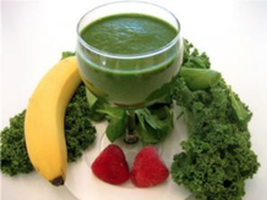 Inflammation is a response to heightened tissue damage resulting from physical injury, exposure to environmental toxins, infection (more on this later), or other types of stressors. Inflammation can help suppress development of a cancerous tumor by stimulating an anti-tumor immune response but more often than not it appears to encourage tumor development. An extensive body of population-based research indicates an increased risk of certain cancers in the setting of chronic inflammation. For example, the two inflammatory bowel diseases, ulcerative colitis and Crohn’s disease, predispose people to cancers of the intestinal tract, like colorectal cancer. In the laboratory, research has shown that many of the biological processes involved in inflammation (e.g., leukocyte migration/movement of white blood cells, dilation of local blood vessels with increased permeability and blood flow, angiogenesis/ growth of new blood vessels from pre-existing vessels), when found in association with cancerous tumors, are more likely to contribute to tumor growth, progression, and cancer spread (metastasis) than to bring out an effective anti-tumor response in the tissue being overtaken by cancerous cells. In short, inflammation fans the flames of cancerous cell growth in tissue that is already afflicted with cancer, and spurs the development of tumors in tissues that harbor pre-cancerous cells. At all three stages of tumor development (initiation, progression and metastasis), inflammation is there, spurring on DNA mutations, secretion of pro-inflammatory hormones and a host of other damaging cellular processes. In a sense, chronic inflammation creates a cellular environment that encourages cells that already have a cancerous tendency to go haywire. While chronic inflammation appears to the increase the likelihood of development of several different cancers, the exact mechanisms by which this happens remains to be determined. As a common cause of inflammation, infection is one plausible mechanism. Numerous studies show the presence of microbial infections can conspire with inflammation to promote tumor growth. In addition to over-replicating themselves, new research shows tumors cells also produce many compounds that attract inflamed cells, which then secrete an array of biological signals to further stimulate cancerous cell division. As like attracts like, defective tumor cells draw more defective, inflammatory cells to it, and thus, the cancer growth is imminent. Once the cancer spreads to other parts of the body, inflammation continues to play a role as the perfect environment to support tumor growth at the metastatic sites. An understanding and appreciation of the strong association between chronic inflammation and cancer has led to many clinical drug trials involving anti-inflammatory drugs like Vioxx and aspirin. Unlike pharmaceutical remedies, which often alleviate one symptom only to cause another, nutraceutical remedies from natural foods heal the damage done by inflammation without adverse side effects. It’s also rare to suffer toxicity from consuming too much of one nutraceutical food. In their 2005 book entitled Foods that Fight Cancer, Beliveau and Gingras nicely summed up the advantages of natural food remedies (nutratherapy) versus artificial pharmaceutical remedies. Cancer-fighting compounds found in food have been naturally selected over the course of evolution to target the same biological processes that anti-cancer drugs seek to treat. One major advantage is that the natural compounds in foods are synergistic – meaning they work together – to create a healing environment that soothes, rather than aggravates, inflammation. Synergy is rarely observed with pharmaceutical agents. Cancer is a formidable opponent and once someone has been diagnosed, anti-cancer drugs cannot and should not be avoided. Instead, they should take advantage of the synergistic nature of cancer-fighting compounds available in foods and eat more phytochemicals to deprive cancer cells of the pro-inflammatory environment they crave. Anti-cancer food therapy compliments anti-cancer drug therapy, and once the cancer is conquered, eating an anti-inflammatory diet will help keep it from returning. Everyone is unique, and if you would like specific suggestions relating to the type of cancer you have and the lifestyle you lead, please contact me and we can set up an appointment where I can give you specific recommendations tailored to you. In the meantime, I suggest these basic changes: A few months ago, I had had enough of feeling exhausted all the time. I would cry at the drop of a hat and couldn't make simple decisions. I didn't feel like me, I knew something was wrong. I went to my doctor and she convinced me I was depressed and wrote me a prescription for an anti-depressant. She said to me, "It's normal, do you know how many prescriptions I write for anti-depressants for women over 40?". After I got home, I started thinking more about our conversation, something didn't feel right, this wasn't depression, there was something more here. I just didn't know what it was.
I decided to make an appointment with a Naturopath, and it turns out, that was the best thing I did. Not only did she test my iron levels and thyroid (which, by the way my doctor never did), she tested me for adrenal fatigue, which is a simple saliva test done over 24 hours. When the results came back that I had adrenal dysfunction, I actually cried...it wasn't all in my head! I could be helped, without a prescription. We've all been there. In times of stress, our bodies go on high alert and suddenly the simply things that create balance in our lives – like getting enough sleep or making a simple decision – seem impossible. We “hit a wall” and crash into depression, or worse, because our bodies are spent and completely exhausted. This is called adrenal fatigue and is the result of our primal “fight or flight” stress response never letting down. Our adrenal glands kick all systems into high gear when we're stressed. As their name implies, the adrenal glands secrete adrenaline among other potent hormones. Located just above the kidneys, it is the basic task of the adrenal glands to respond to stress by rushing your whole body into “fight or flight” mode. This means our adrenal gland either signal our body to rage against whatever illness or irritant is causing the stress, or flee to a safe place where the stress can be avoided. For instance, to fight, our adrenal glands signal the heart to work harder, increasing the heart rate and elevating blood pressure. Energy use increases immediately as demands on the body's stores increase under the influence of the adrenal hormones. Then, when the crisis is abated, the adrenal glands restore themselves and replenish energy supplies for the next emergency. If we are constantly over-worked, undernourished and chronically exposed to toxins with no sign of a break, then there's no let-up for the adrenal glands. Eventually, they will bottom out and plummet into adrenal exhaustion. Adrenal fatigue occurs when the adrenal glands are not longer able to adapt to any amount of stress. When this happens, the effects can be widespread and long-lasting, causing suppression of the immune system, hormonal imbalance, skin flare-ups, autoimmune diseases and mood disorders. Adrenal fatigue is, indeed, the underlying factor in many stress-related conditions ranging from cardiovascular disease and cancer, to colitis, chronic fatigue to Alzheimer's. Symptoms of Adrenal Fatigue
People with adrenal exhaustion or chronic fatigue can appear quite normal but, inside, they live with a feeling of always having to push themselves too far. To keep themselves going, these exhausted people rely on stimulants such as caffeine or sugar. Often, people with worn out adrenal glands seem lazy or unmotivated but quite the opposite is true – they tend to be high-achiever or workaholics. In their state of adrenal exhaustion, unfortunately, they have to push themselves harder to merely accomplish the basic tasks. Does this sound like someone you know? If so, here are some ways to heal adrenal exhaustion and restore relaxation and vitality.
If you need help making changes, I'm here to help. Reply to this email or give me a call at 778-836-3831. In good health, Cheryl Wahl, RHN, CPCC Many people believe the concept of "healthy Halloween" is a classic oxymoron. It’s true that once we all were children who loved Halloween and collecting all the candy we could fit into our treat bag. But parents who want their children to have healthy teeth and bodies may take one for the team and risk being regarded as "Halloween Scrooges" in an effort to minimize the impact of Halloween on their kids and the environment. Here are a few ways to help your family have a healthier Halloween:
How You Can Have a Healthier Halloween Gone are the days of trick-or-treating for endless hours and coming home with a bag of loot almost too heavy to carry. Many people are opting for healthier choices these days, and experiencing many health benefits. When Halloween comes around each year, many parents struggle to maintain the healthy habits that they have helped their children develop. Parents don’t generally want to be viewed as “Halloween Scrooges,” yet they want to limit the sugar that their kids eat. Too many kids still eat more sugar than ever. This leads to a high consumption of high fructose corn syrup, which is known to be a leading contributor to childhood obesity. High fructose corn syrup is made from genetically modified corn and enzymes, and comes with plenty of nutritional pitfalls. Reducing the amount of high fructose corn syrup that your children consume should be a priority. The key to a healthy Halloween is compromise. Kids are exposed to so much media hype and so much peer pressure that they can be easily lured into making unhealthy choices when it comes to snacks. Compromise with your kids and allow a small amount of the highly-coveted sugary stuff in exchange for several good choices. By allowing small amounts and monitoring the consumption of sugary snacks carefully, you can help prevent obesity and tooth decay, as well as many other potential unhealthy side effects--while keeping your kids happy. Parents should be prepared for a possible negative reaction from their kids when they limit the Halloween candy. Some parents opt to allow small amounts of Halloween candy for the first few days after the holiday and then simply throw out the leftovers. Some parents opt to store some candy in the freezer, so that it can be enjoyed at a later date and spread out over a longer period of time— this helps to avoid the possibility of binging right after Halloween. Offering other types of treats in lieu of Halloween candy is another popular option. Instead of a bagful of candy, you can put together a basket of fun and active toys, like balls, Frisbees or other simple things that encourage kids to be more active. When kids are active and having fun, the loss of Halloween candy is quickly forgotten! Fortunately, there are plenty of options when it comes to limiting Halloween candy for your kids. While it may seem “unfair” or “mean” to your kids, parents are responsible for helping children learn to make healthy choices. Rather than pile on the candy, find some fun and healthy Halloween recipes that incorporate fruits and veggies instead of candy--yet make them in fun eyeball shapes or design a healthy “graveyard” using hummus, guacamole and plenty of cut up veggies for tombstones. When you can make healthy foods fun, you will find that your children are more likely to choose them. The long term benefits of limiting excess sugar and additives from the diets of children are countless. Teach your children about healthy choices at a young age and you can help prevent many of the possible diseases and chronic conditions that could develop later as a result of poor habits. Halloween Health 101! Halloween may present a special challenge for parents, with the sudden huge influx of sugary snacks into the house. Limiting the amount of junk that your kids eat is important, but helping them learn how to make healthy choices is even more important. Many parents are very creative when it comes to limiting their child’s intake of Halloween candy. Feeding kids before trick-or-treating can help because if the kids are full, they are less likely to binge on the candy right away. It is important to be clear with your children about the limits surrounding their Halloween candy. Be clear that you are not taking the candy away as a punishment, but as a way to support them in making healthy food choices. By compromising and allowing small amounts, you may be able to significantly limit the candy and help your children learn how to enjoy some “forbidden” foods in moderation. Instead of focusing on the candy, use healthy foods to celebrate the Halloween season. Plenty of healthy recipes that use fruits and veggies can be found, and when kids are eating festive, fun foods (even when they are made from veggies), they will learn to enjoy their healthy choices. Avoid having the excess candy in house by purchasing candy you may hand out at the last minute and getting rid of any leftovers—don’t let your kids see you binging on the sugary stuff! Not only will you regret it, you are setting a terrible example. Some parents try a “buy back” plan for Halloween candy. Many kids are motivated by getting a few bucks, so you might want to consider buying their candy from them. The less they eat, the more money they can get, if you work out a certain price per pound! Keeping plenty of tasty and nutritious snacks on hand will help kids get full of healthy foods, rather than reach for the candy when they want a snack. The occasional Halloween treat is not terribly harmful if they have filled up on good foods first. Negotiate the limits and enforce them. Kids often need plenty of guidance when it comes to the temptations of Halloween candy. Be sure that you are focusing on the positive effects of not eating the candy, rather than using it as a punishment. When kids feel that they somehow got “ripped off” by having no Halloween candy, then they are more likely to sneak or stash the candy somewhere and rebel a bit at other healthy choices. Use your best parental judgment when it comes to limiting your child’s Halloween candy. Offer plenty of healthy alternatives. If you are truly worried about your child’s obesity or other health condition, you must take the limits far more seriously. However, if your child has learned the value of making healthy choices, then you can allow them to continue to do so and they will probably eat very little Halloween candy on their own. To set a good example, you can hand out healthier alternatives to Halloween candy to the trick-or-treaters that come to your house--think raisins, pretzels, stickers, granola, pumpkin or sunflower seeds or other healthy, tasty treats. DOWNLOAD YOUR FREE COPY OF "HEALTHY HALLOWEEN RECIPES". In good health, Cheryl Wahl, RHN, CPCC Feel full until your next meal with these whole food nutrient dense snack ideas.
Feeling hungry is actually a good thing. It signals that you are in a fat burning zone. Except it’s only 10am in the morning, your stomach is growling, and you’re feeling hungry. You are doing your best trying to watch your weight and don’t want to overdo your daily food intake limit. But you don’t know if you can make it until lunch without something to nibble on, nor should you will power it out until lunch. You will lose and the chocolate bar will win! It can be hard finding snacks that are both low in calories, nutritious and filling at the same time. The trick is to find a snack that has protein for energy and/or fiber to keep you satisfied. No matter if you’re in the mood for something sweet, savory, or a combination of the two, here are some great snack ideas to satisfy your cravings. Even though you should not be counting calories each option is less than 100 calories AND the quality of the calories are all Cheryl approved. Sweet Tooth Snacks Depriving yourself of sweets is a recipe for diet failure. Give yourself a small break every now and then to enjoy in the foods you love. Otherwise you’ll reach a breaking point and overindulge. If sweets are what you’re craving, try the following low-cal options:
Just as easily, you can go overboard when munching on salty snacks. It takes a lot of will power to eat only a few potato chips. It’s better to just keep them out of the house. So when you’re in the mood for something savory or salty and low in calories, go with one of the following:
Perhaps you’re craving a combination of salty and sweet foods, this is what I crave. Sound good to you? Get your appetite satiated without feeling guilty by indulging in the following snack ideas:
Green Light on Snacks If eating healthy is a priority for you then planning, preparing and bringing snacks with you should be a must. If you're not prepared, then poor snack choices tend to overtake your sensible side. If you’re overly hungry when mealtime comes, you’ll be more susceptible to overeating. None of these 30 snack ideas sound appealing to you? Then get creative and make your own. Because contrary to what your past eating habits may indicate, wise snack choices should be part of a healthy, balanced diet. In good health, Cheryl Wahl, RHN, CPCC, Personal Trainer |
Want to reduce your risk of cancer, receive recipes and health information regularly straight to your in-box? Download your free copy now.
Archives
December 2022
Categories |

